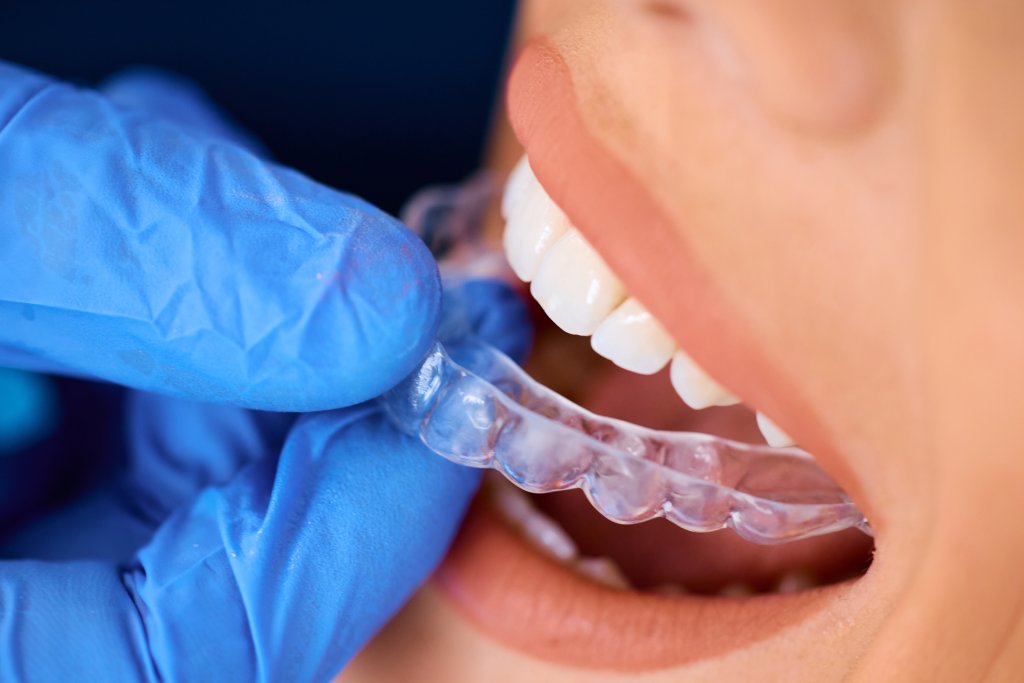The average cost of dental implants is a common concern for many people considering this effective tooth replacement option. Generally, the cost can range anywhere from $1,500 to $6,000 per implant, with most people spending between $3,000 and $4,500. However, this cost can fluctuate based on several factors, such as materials used, location, additional procedures required, and the dentist’s expertise.
Dental implants offer a remarkable way to restore missing teeth, improve oral function, and maintain a natural-looking smile. But understanding the components that contribute to their cost is crucial to making an informed decision. Factors like the type of implant, the need for bone grafting, and whether the procedure is covered by insurance can all influence the final bill.
I’m D.D.S. Marta Milejczyk, and I’ve been dedicated to helping individuals understand and manage the costs of dental care, especially when it comes to dental implants. Based on my extensive experience and clinical training in restorative and implant dentistry, I am here to guide you through the complexities of dental implant costs.

Average cost of dental implants word list:
Understanding the Average Cost of Dental Implants
When considering dental implants, it’s important to grasp the financial aspects involved. Typically, the average cost of dental implants ranges from $1,500 to $6,000 per implant. Most patients find themselves spending between $3,000 and $4,500 for a single implant. This cost might seem steep, but it’s important to recognize what contributes to these figures.
Components of the Cost:
-
Implant Type and Material: The implant type and the material used significantly influence the cost. For instance, porcelain and zirconia implants are generally more expensive compared to titanium.
-
Additional Procedures: Sometimes, extra procedures like bone grafts are necessary, which can add to the total cost. A bone graft may be required if the jawbone isn’t thick enough to support an implant.
-
Geographic Location: Where you live can also impact the cost. Urban areas or places with a high cost of living might have higher prices for dental services.
-
Dentist’s Expertise: The experience and reputation of the dentist performing the procedure can affect the price. More experienced dentists may charge more for their services, reflecting their skill and the quality of care provided.

Factors Affecting Dental Implant Costs
When planning for dental implants, several factors can influence the total cost. Understanding these can help you make informed decisions and potentially save money.
Materials
The choice of materials is a major factor in determining the cost of dental implants. Titanium is the most commonly used material due to its durability and compatibility with the human body. However, some patients opt for zirconia or ceramic implants, which can be more expensive. These alternatives are often chosen for their aesthetic appeal or for patients with metal allergies.
Location of the Implant
Where the implant is placed in your mouth can also affect the cost. Implants for front teeth may require more precision and additional procedures, such as bone grafting, to achieve the best aesthetic result. This can increase the overall expense.
Additional Procedures
Sometimes, additional procedures are necessary before placing an implant. For instance, a bone graft might be required if the jawbone lacks the necessary density to support the implant. Sinus lifts are another example, particularly for implants in the upper jaw. These procedures add to the total cost.
Dentist’s Experience
The expertise and training of the dentist performing the procedure can significantly impact the cost. Highly experienced dentists often charge more, as they bring a wealth of knowledge and skill to the table. Choosing a dentist with a strong track record can ensure better outcomes and reduce the risk of complications.
Geographic Location
Where you live plays a role in the cost of dental implants. In urban areas or regions with a higher cost of living, dental services tend to be more expensive. Conversely, rural areas might offer lower prices, but consider the quality of care.
Insurance Coverage
Dental insurance can help offset some of the costs associated with implants. However, coverage varies widely between plans. Some insurance providers might cover a portion of the cost, typically between 10% to 50% after the deductible is met. It’s crucial to review your policy and understand its limitations and benefits.

By understanding these factors, you can better plan for the financial aspect of getting dental implants. In the next section, we’ll explore the different types of dental implants and their associated costs, helping you decide which option might be best for you.
Types of Dental Implants and Their Costs
When considering dental implants, it’s important to understand the different types available and their associated costs. Each type serves a unique purpose and can vary in price.
Endosteal Implants
Endosteal implants are the most common type of dental implant. They are placed directly into the jawbone and typically made of titanium. These implants act like artificial roots to hold replacement teeth.
- Cost Range: The average cost of endosteal implants can vary from $1,500 to $6,000 per implant. This range depends on factors like the implant’s material and the dentist’s expertise.
Subperiosteal Implants
Subperiosteal implants are less common and used when patients don’t have enough healthy jawbone to support endosteal implants. These implants sit on top of the jawbone but under the gum.
- Cost Range: These implants can be more expensive due to the complexity of the procedure. Expect costs to be in the higher range of $3,000 to $4,500 per implant.
Transosteal Implants
Transosteal implants are the least common and often used in special cases. They involve placing a metal plate along the jawbone, with screws going through the jawbone. This type is usually reserved for patients with extreme bone loss.
- Cost Range: The complexity and rarity of transosteal implants make them the most expensive, with costs potentially exceeding $5,000 per implant.
Understanding the types of dental implants and their costs can help you make an informed decision about which option suits your needs and budget. In the next section, we’ll discuss ways to make dental implants more affordable, including insurance and financing options.
How to Make Dental Implants More Affordable
Dental implants can be expensive, but there are several strategies to help manage costs and make them more affordable.
Insurance Coverage
Dental Insurance can significantly reduce the out-of-pocket cost for dental implants. While not all plans cover implants, some do pay a portion of the costs. For instance, insurance providers like Delta Dental and MetLife cover up to 50% after the deductible. Always check your policy details and talk to your provider to understand what is covered.
Financing Options
Financing plans allow you to pay for dental implants over time. Many dental offices offer these plans, which can break down the cost into manageable monthly payments. Services like CareCredit act as a healthcare credit card, specifically for medical expenses, letting you spread payments over several months.
Payment Plans
Payment plans are often available directly through dental practices. These plans can be custom to your budget, allowing you to pay for the procedure over time without the need for a third-party financing service. Always ask your dental office about available options.
Discounts
Some dental clinics offer discounts for upfront payments or when multiple implants are needed. Paying for the entire procedure at once might earn you a discount, lowering the overall cost. Additionally, clinics like teaching clinics often provide services at reduced rates as they serve an educational purpose.
By exploring these options, you can find a way to make dental implants more affordable and accessible. In the next section, we’ll address some frequently asked questions about dental implant costs.
Frequently Asked Questions about Dental Implants Cost
Is a full set of dental implants worth it?
When considering the average cost of dental implants, many wonder if a full set is worth the investment. The answer often depends on personal health needs and lifestyle. Dental implants are known for their durability and can last a lifetime with proper care, which is a significant advantage over dentures or bridges that may need replacement every 5 to 10 years.
Moreover, dental implants contribute to better oral health. They support jawbone health, prevent bone loss, and maintain facial structure, which can be compromised with missing teeth. These benefits often make implants a valuable long-term investment for those prioritizing oral health and quality of life.
What is the most expensive part of a dental implant?
The most costly component of a dental implant is usually the titanium post. This post acts as the root of the artificial tooth, securely anchoring it to the jawbone. The surgical procedure to place this post is intricate and requires specialized skills, contributing to its high cost.
Additionally, some patients may require bone grafts if their jawbone lacks the necessary density or volume to support the implant. These grafts can add to the overall expense, ranging from $300 to $800 per graft. However, these preparatory procedures are crucial for ensuring the implant’s success and longevity.
How many dental implants do I need for a full set?
The number of implants needed for a full set of teeth varies based on individual circumstances and the chosen method. A popular option is the All-on-4 technique, which uses four strategically placed implants to support an entire arch of teeth. This method is often more cost-effective and less invasive than placing an implant for each missing tooth.
In contrast, traditional methods might require one implant per missing tooth, significantly increasing the number of implants needed and the overall cost. The choice between these methods should be discussed with a dental professional, who can provide guidance based on the patient’s specific needs and oral health condition.
By understanding these aspects of dental implants, patients can make more informed decisions about their oral healthcare investments.
Conclusion
Choosing dental implants is a significant decision, and at DP Dental Studio, we understand that every patient’s needs are unique. That’s why we focus on providing personalized treatment plans custom to your specific requirements and financial situation.
Our experienced team is committed to maximizing the benefits you receive from your dental insurance. We collaborate closely with insurance providers to ensure you get the most value, making your dental implant journey as affordable as possible. We also offer a variety of financing options and payment plans to ease any financial strain.
At DP Dental Studio, we pride ourselves on creating a welcoming environment where our patients feel comfortable and informed. Our clinic is designed to deliver prompt and virtually painless treatments, ensuring that your experience with dental implants is positive and stress-free.
We believe in the transformative power of dental implants—not just for enhancing your smile but also for improving your overall oral health. By choosing us, you’re investing in a team dedicated to helping you achieve the best possible outcomes.
For more information on how we can help you with dental implants, visit our Dental Implants Page and take the first step towards a healthier, more confident smile.

